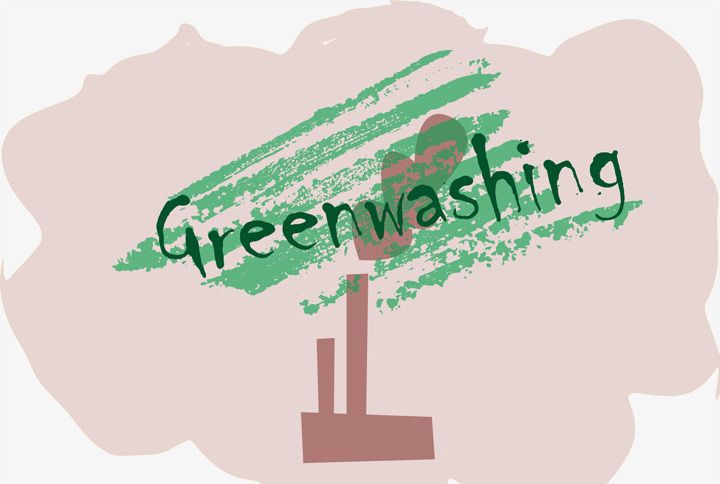The visible change in the climate has put pressure on industries across the world to re-evaluate the way they function. Turning to more green and sustainable industrial strategies has been the need of the hour for quite some time now. But far too many companies don’t feel that kind of responsibility or possess the willpower to care and make a difference. So how do you then show change without really changing much? By greenwashing. Greenwashing is an advertising gimmick companies indulge in, to market themselves and their products as environmental-friendly, using buzzwords like “eco-friendly”, “sustainable“, “ethical” etc. And sadly, this sick marketing technique has proven effective for brands simply because as consumers, we tend to fall for such practices at face value. It interferes with our ability to actually make green choices.
So the next time you think of buying something that may appear eco-friendly, keep these 5 tips in mind to avoid greenwashing from brainwashing you!
1. Before buying a sustainable product, research it
Educate yourself about the brand
The first step of avoiding being greenwashed is to make yourself familiar with the brand and not just the product. Research—thoroughly—whether the company calling itself sustainable or eco-friendly or green is so in its entirety or are they just claiming to be sustainable based on a single product. Again, that single product may be marketed heavily as being green when in actuality, only a tiny, fraction of it meets the sustainability standards. The rest of the contents are the exact opposite of being environmentally friendly.
Scour through their website, their social media pages and look for any controversies attached to them
In today’s day and age, a full-fledged, active and informative website and a strong digital presence are as important to a brand as its customers. When a business is truly trying to make a difference, not just for the environment but also for the people involved, their digital sites contain every little detail that makes them ethical and environmental-friendly. It pretty much means that they’re transparent about their business practices and have nothing to hide. If you find it hard to get answers to your questions about the greenness of the product or the ethics of the company, it’s usually because those things are non-existent.
2. Be wary of jargon
Look out for terms and phrases that are too difficult to understand
Marketing techniques evolve with time and people. So naturally, the concept of greenwashing had to as well. When brands figured that merely slapping buzzwords onto packaging isn’t doing the trick anymore, they started confusing customers with information that seems difficult to understand. And as humans, when something becomes difficult to understand, it just automatically seems superior and legitimate. Isn’t it so twisted the way the human mind works? So, watch out for words and phrases that sound like rocket science. They’re usually just words and phrases that mean the opposite of the buzzwords they are trying to sell you.
On the flip side, also spot suggestive terms
There’s information that you think only an expert may be able to decode and then there are simple and classic suggestive terms as mentioned above. Sure, a product may have some percentage of a natural substance, let’s take for example a bamboo toothbrush. Unless the bamboo used to make that toothbrush wasn’t sourced ethically and didn’t cause further pollution at the time of manufacturing, that toothbrush is not eco-friendly. Hence, be careful about fluffy language on the packaging. If you spot it, Google it right away!
And in the midst of it, check for vagueness and ambiguity
Since we’ve already broken down the jargon and suggestive terms as smart marketing techniques, how do you innovate further? Mix these two gimmicks! Yes, brands will sometimes just be plain vague about what makes them and their products environmental-friendly. The false or incorrect data they feed you will make you question certain things but rarely will you arrive at a reasonable conclusion. For example, stating that faux leather is sustainable or ethically sourced. Faux leather is simply vegan, it’s not eco-friendly or sustainable because it’s basically plastic. So how do you recognise when a company is trying to leave the conversation ambiguous? By noting that a business that is actually sustainable in its ways will ensure that the information they want to convey is easy to understand, factual and backed by science.
3. Look for boastful images
Do not fall for the smart usage of colours that brands pick for their packaging. Or imagery that shows trees or flowers and other graphics that may suggest eco-friendliness, because it isn’t always what it suggests. Just like fluffy language and jargon, these kinds of pictures are a way to make you think you’re saving the planet without actually researching how. If you’ve noticed, sustainable brands have very simple and minimalistic packaging. Visuals have a strong impact on our mind. Don’t let it get the best of you.
4. Double-check those third-party endorsement claims
To fool the consumers even more so as to not raise any sort of questions, companies go as far as claiming that their products are endorsed by third parties working to ensure all the sustainability standards are met by the product. Fun fact, some of these endorsements are fake and the labels are false. For example, “certified environmental-friendly”, “tested by XXX (false/non-existent) company, etc. Therefore, look out for such claims and double-check whether they’re true.
5. Understand what the brand is communicating
Lastly, when you’re out shopping or browsing online from the likes of your bed, try to deep dive into what the company is selling. Are they asking you to make greener choices simply by picking them or are they also educating you in a host of ways, other than just shopping, to lead a sustainable and mindful life? Think about it. A brand that’s greenwashing will find smart and sneaky ways to tell you that only by purchasing their products and services will you make green choices. For example an organic cotton shirt. Now a sustainable brand may also give you tips on how you must take care of your clothes to increase their longevity, other practices that may reduce your need to consume more, so on and so forth.
These are all the ways you can avoid being greenwashed. Be smart, be curious and do lots of research! Do you know of any other ways that one can avoid this trap? Tell us in the comments below.
Join Malini’s Girl Tribe to be a part of the conversation.

